Corn snakes are one of the most available snakes in the pet trade today.
Vast numbers of corn snakes are captive bred annually, and are justifiably
one of the most popular snakes of all time. Corn snakes are relatively
small, rarely exceeding five feet in length, active feeders, tolerate a
wide variety of environmental conditions, come in a dazzling array of
color morphs, and are very easy to breed. All of these factors combined
make the corn snake an excellent choice for both the beginning and
advanced reptile hobbyist.
Enclosure Size
Corn snakes are relatively small, and as such, they do not require
large enclosures. A baby corn snake can happily live in a ten gallon
aquarium or enclosure of similar size. This type of enclosure is
acceptable as long as appropriate heating is provided. Upon reaching full
adult size (about three to four years), a corn snake will require an
enclosure with the minimum dimensions of a standard twenty gallon long
aquarium. Larger aquariums such as a thirty gallon breeder or fifty-five
gallon tank are also appropriate. No matter whether your corn snake lives
in a humble home or a palace, there are several important details to keep
in mind when setting up your new pet.
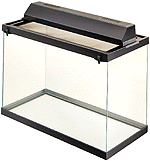 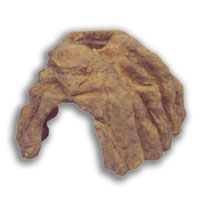 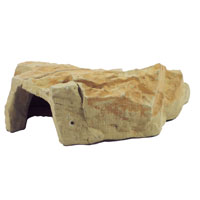 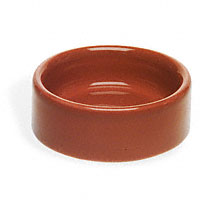
Substrate
The substrate of a cage is the material that is on the bottom.
There are appropriate and not so appropriate choices of substrate in corn
snake housing. Cedar shaving are toxic and unacceptable as they cause
respiratory problems in snakes. I personally do not recommend pine
shavings or corncob bedding (manufactured for use with bird).
These should not be used as a substrate because they cause excessive
drying of dermal tissues and can cause serious intestinal blockage if
swallowed. Acceptable substrates include reptile bark, newspaper, paper
towels and Astroturf. Reptile bark can be purchased in pet stores, and is
attractive and natural looking. Newspaper (several layers) can be used
and is very absorbent and is easy to replace quickly. This substrate,
while not particularly attractive, allows one to keep the cage very clean
by continuously replacing the soiled paper, Paper towels have the same
advantages and disadvantages of newspaper. Astroturf can be used, but it
does tend to rot easily if wetted, so it is best to have several pieces
cut to fit the cage so you can rotate dirty and clean pieces.
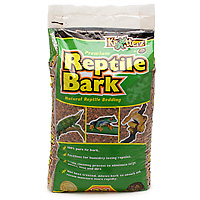
Appropriate Heating
There are several choices for appropriate corn snake heating.
Whatever choice of heating is used, it is very important to provide one
area of the cage where the air temperature is 80-85 degrees F. Corn
snakes, like all reptiles, do not make their own body heat and rely on a
behavioral mechanism called thermoregulation to regulate their body
temperature. Thermoregulation means that when a reptile is too cool, it
moves to an area to warm itself, and when it is too hot, it moves to a
cooler area. Access to warm areas are critically important to the health
of your snake. Appropriate heating is required for proper digestion and
the effective functioning of the immune system. A good method of heating
is the use of quality under tank heating pads.
Under tank heaters are plastic with one adhesive
side. The adhesive side of the heater is used to attach it to the bottom
of the outside of the tank, on one side of the cage. These heaters can
only be used with certain types of cages, so check the directions before
purchase. Hot rocks provide a localized heat source that is often too
hot. As a result, the snake will curl itself about the rock in an attempt
to raise its body temperature. This can result in serious thermal burns.
Think about this from the snake's point of view. One tiny area of the
cage is 100 degrees F, and the rest of the cage is freezing. Without
some type of heat, reptiles will get sick, so the animal will use whatever
source of heat is provided, even if it is too hot. It is much better to
provide indirect heating, or heating that the animal has no direct access
to. This will prevent thermal burns from occurring.

Feeding
Corn snakes are rarely picky eaters if they have the proper heat and
enclosure. One important aspect of feeding that is often overlooked is
the addition of hiding areas to the cage. Corn snakes, like most snakes,
like to feel secure in their environment. One way of providing for this
need is to put hiding spots in the enclosure. Hiding spots can be made of
anything, as long as the snake can completely fit inside the area and hide
itself from view. Old cardboard boxes are good for this, but so are many
of the commercially manufactured hiding spots available in pet stores. A
hiding spot should be placed both on the warm end and the cool end of the
cage, so that the animal can feel secure in any spot. Corn snakes kept
without appropriate hiding areas become stressed and may refuse to eat.
Hatchling corn snakes begin eating pinky mice, and progress up to adult
mice once they are mature. A good rule of thumb is to feed the snake a
food item that is the same, or close to, the snake's diameter. Feed an
item that is too large, and the snake will often regurgitate it. Snakes
will also regurgitate if they do not have a warm area or if they are
handled too soon after they eat. Corn snakes can be fed two times a week,
but once is usually enough. Clean water should be available at all
times. Corn snakes drink often.
Conclusion
Corn snakes are justifiably one of the most popular pet snakes of all
time. They come in many beautiful colors, and are hardy and docile.
This care sheet is not all the information required to care for a corn
snake properly, but it is a start. If you own a corn snake or plan on
purchasing one, it is YOUR responsibility to thoroughly research the needs
of your pet. Doing so will make both your lives easier.
|